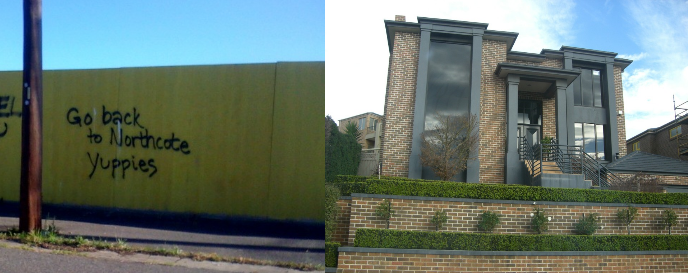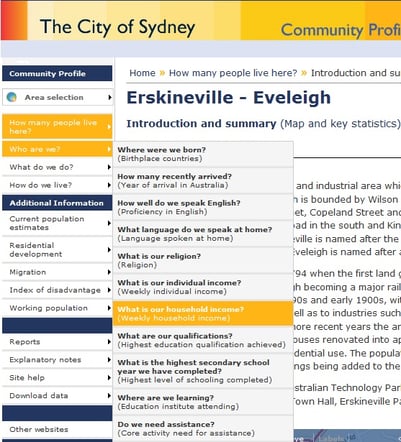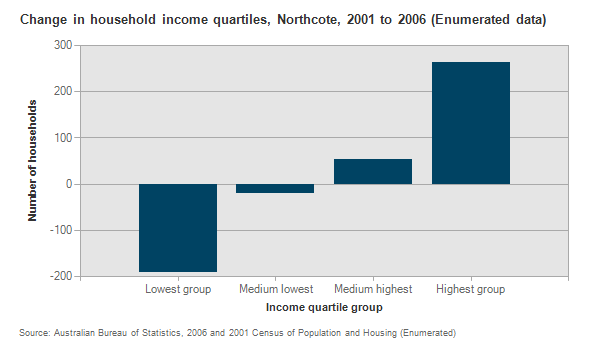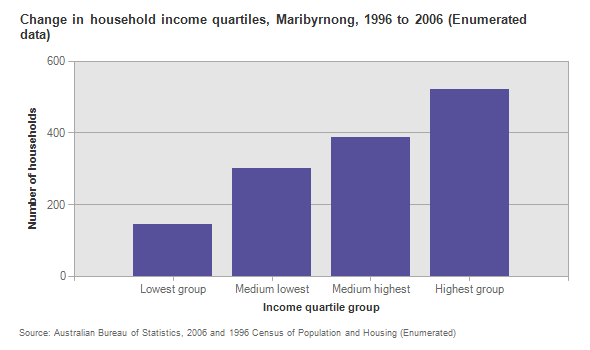Pilates, goat’s cheese: there goes the neighbourhood
This article in last week’s Age talks about Northcote and Maribyrnong and how they have become gentrified.

While you can’t find too much about pilates, goats’ cheese pizzas and Subarus from Darebin’s community profile, it’s not too hard to see whether an area is gentrifying, and in the case of these two suburbs, the article isn’t picking up on anything new, it’s been happening for quite some time!
Gentrification is the process by which certain suburbs which had historically been poorer areas are “discovered” by population groups with higher income and (likely) higher education levels, which pushes up housing prices and rents, as well as often the cost of living, in many cases pushing lower income people out of the area.
In many areas of inner Melbourne and Sydney, this has been happening for a long time, and in some suburbs (eg. Richmond in Melbourne, Erskineville in Sydney), the only places left with low income populations are social housing estates.
The clearest indicator of gentrification in demographic profiling is to use household income. To see whether incomes are changing over time, in .id’s demographic profiles, use the “Household income quartiles” section, found under “Who are we? – > What is our household income?” on the second tab.

It’s important to use quartiles because it adjusts for the effects of inflation and lets you see real world change relative to the metropolitan average, rather than nominal changes in dollar values.
In the case of Northcote’s income, over a 5, 10 or 15 year time period to 2006, it’s very clear that there have been declines among households in the lowest income quartile (bottom 25% of Melbourne), and increases at the upper end. It even neatly fits into a scale – the higher your income, the more likely you are to have moved into Northcote over any of these time periods.

For Maribyrnong’s incomes, it’s not quite as clear over a 5 year time scale, but over 10 years, it’s quite strong.

Other good indications of a gentrified area are large increases in professional occupations, people with degree level qualifications, and in some cases, relative decreases in number of people from a non-English speaking background.
So these trends are not new (we’re already nearly 5 years on from the last Census), and often by the time the public becomes aware of gentrification, it’s pretty well advanced. So don’t use this information to plan your next big investment – that horse has already bolted!

.id is a team of demographers, population forecasters, spatial planners, urban economists, and data experts who use a unique combination of online tools and consulting to help governments and organisations understand their local areas. Access our free demographic resources here














